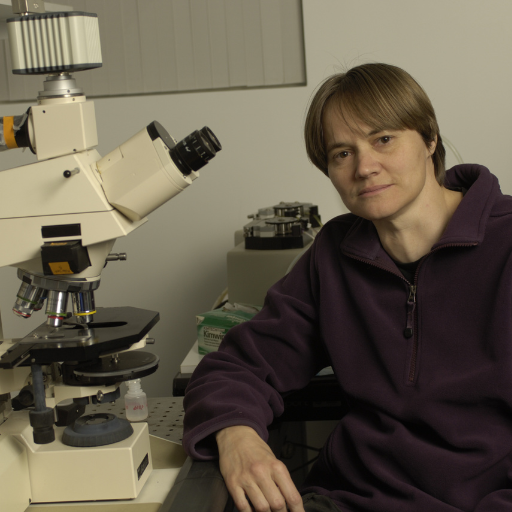Molecular Genetics Study of Primary Open Angle Glaucoma

About the Research Project
Program
Award Type
Standard
Award Amount
$25,000
Active Dates
April 01, 1994 - March 31, 1995
Grant ID
G1994319
Summary
Glaucoma is a major eye disease which has blinded about 80,000 of the 2,000,000 Americans affected with it. Even though some forms of treatment have been developed, including both medications and surgery, a precise understanding of this disease on the cellular and biochemical levels is lacking. Recent medical research advances are allowing scientists to use molecular biology and a technique called positional cloning to gain understanding of some human disease processes. The positional cloning approach involves finding out where a disease gene is located on one of the human chromosomes and using that location information to lead to the cloning of the gene responsible for the disorder. The critical element for this kind of research is the size and structure of families in which the disease is being inherited. Large enough families are rare and the ones which we have identified are very valuable. The long range purpose of this project is to find and clone the gene(s) responsible for inherited forms of primary open angle glaucoma. The immediate goals of this proposal are to better characterize a set of 16 families with hereditary primary open angle glaucoma and to determine which families are carrying a glaucoma gene not located at the 1q location of the juvenile glaucoma gene. Any of the 16 families for which the glaucoma gene is not at the juvenile glaucoma locus has the potential for use in an open-ended linkage search for the location of the gene(s). For some families, we have a lot of information on the family structure, but need to get more clinical information so that we can be certain of who is affected and who is not. For other families we need to do more genealogy work to expend the pedigree structure, since we have only the immediate family defined. This grant will allow us to further characterize these families, to collect blood samples, and to test genetic markers from the 1q region of the juvenile glaucoma gene. It will also allow us to carry out statistical analyses of these families to determine which families should be used first in an open-ended linkage search and to determine to what extent each family can be analysed independently, without pooling of data between families. By the second year of the grant, we should be at the point of starting the open-ended linkage search for least some of the families. Our long range goal is finding the gene responsible for this most common form of glaucoma. A cloned glaucoma gene would aid in studies of the underlying biochemical causes of glaucoma and lead to improved methods for treating and perhaps eventually curing primary open angle glaucoma. Such a clone would allow us to study the function of the gene, to develop new assays for potentially therapeutic drugs, and to give more precise information to patients about what is causing their disease. Such a clone would give us tools to help develop tests to distinguish between different kinds of glaucoma so that the optimal therapy might be assigned based on precise understanding of the defect. The advances to come from the cloning of glaucoma genes are sorely needed. In spite of a variety of drug therapies and surgical approaches to glaucoma, blindness cannot always be prevented. Many who are not completely blind have reduced vision, and everyone who suffers from glaucoma faces a lifetime of pressure monitoring, visual testing, drug therapies, possibly multiple surgeries, and fear of eventual blindness. The approach we will use, called positional cloning, has been used with dramatic success to clone genes responsible for diseases such as Cystic Fibrosis. Researchers first mapped the location of the gene, then cloned it, then determined the gene product and functions. The clone they obtained has lead to genetic screening and gene therapy trials. Similar thinking about glaucoma must await both advances in gene therapy approaches and the cloning of a glaucoma gene. With the money we receive from this grant we will be able to examine the genetic material, DNA, which we will obtain from these families so that we can eventually find out where the gene is located. We will hire technical assistance and obtain supplies needed to characterize and collect the families and blood samples and to carry out the genetic tests on DNA from the family members. Once the gene(s) has been mapped, we will have the information we need to proceed towards the cloning of the primary open angle glaucoma gene(s).
2nd Yr
Glaucoma is a major eye disease which has blinded about 80,000 of the 2,000,000 Americans affected with it. Even though some forms of treatment have been developed, including both medications and surgery, a precise understanding of this disease on both the cellular and biochemical level is still lacking. Recent medical research advances are allowing scientists to use molecular biology and a technique called positional cloning to gain understanding of some human disease processes. The positional cloning approach involves finding out where a disease gene is located on one of the human chromosomes and then using that location as the basis for cloning the gene responsible for the disorder. The critical element for this kind of research is the size and structure of families in which the disease is being inherited. Large enough families are rare and the ones which we have identified are very valuable. The long-range purpose of this project is to find and clone the gene(s) responsible for inherited forms of primary open-angle glaucoma. The immediate goals of this proposal are to better characterize a set of 19 families with hereditary primary open angle glaucoma and to determine which of those families are carrying a glaucoma gene not located at the previously characterized chromosome lq glaucoma gene location. Any of the 19 families for which the glaucoma gene is not at the juvenile-onset glaucoma gene location has the potential for use in an open-ended linkage search for the location of the new gene(s). We have begun carrying out further characterization of families and individuals within those families. We have collected 167 blood samples from members of 15 different primary open angle glaucoma families and we have begun the genetic evaluation stage of the project for some families. We have determined that the gene responsible for glaucoma in the first family tested is probably a different gene than the one so far associated with juvenile-onset glaucoma. We have begun genetic testing on additional families and expect that by the end of the project we should have a group of families for use in genetic mapping aimed at eventual positional cloning approaches to finding additional primary open angle glaucoma genes. We should also ending up finding out whether the chromosome 1q juvenile onset glaucoma gene can cause late onset primary open angle glaucoma. Our long range goal is to find the gene{s) responsible for this most common form of glaucoma and to determine how many different genetic forms of the disease there are. Our finding that the first family tested has a glaucoma gene not located at the chromosome 1q locus suggests the existence of at least 2 different primary open angle glaucoma genes and validates our basic strategy. Why do we want to clone a glaucoma gene? A cloned glaucoma gene would aid in studies of the underlying biochemical mechanisms of the disease and would lead to improved methods of treating and perhaps eventually curing primary open-angle glaucoma. such a clone would allow us to study the function of the gene, to develop new assays for potentially therapeutic drugs, and to give more precise information to patients about what is causing their disease. Such a clone would give us tools to help develop tests to distinguish between different kinds of glaucoma so that the optimal treatment might be assigned based on precise understanding of the defect. The advances to come from the cloning of glaucoma genes are sorely needed. In spite of a variety of drug therapies and surgical approaches, blindness cannot always be prevented. Many who are not completely blind have reduced visual capabilities, and everyone who suffers from glaucoma faces a lifetime of pressure monitoring, visual testing, drug therapies, possibly multiple surgeries, and fear of eventual blindness. With no current way to tell who will eventually be affected, irreversible visual field damage may develop in many individuals who are not diagnosed until after the disease has progressed. The approach we are using, called positional cloning, has been used with dramatic success to clone genes responsible for diseases such as Cystic Fibrosis. Researchers first mapped the location of the gene, then cloned it, then determined the gene product and functions. In just a few short years since the cloning of the Cystic Fibrosis gene, the clones they obtained have led to genetic screening and gene therapy trials. Such advances for glaucoma must await both advances in gene therapy and the cloning of the glaucoma gene(s). With the money received from this grant, we have been examining the genetic material DNA, obtained from our set of glaucoma families so that we can eventually find where the gene is located. We have hired technical assistance and obtained blood samples from which we have begun to carry out genetic tests. Once the gene(s) has been mapped, we will have the information we need to proceed towards the cloning of the primary open angle glaucoma gene(s) and the development of improved diagnostic tests and therapies.
Related Grants
National Glaucoma Research
Interleukin-10 As a Neuroprotective Factor in Glaucoma
Active Dates
July 01, 2025 - June 30, 2027

Principal Investigator
Tatjana Jakobs, MD
Current Organization
The Schepens Eye Research Institute, Mass. Eye and Ear
Interleukin-10 As a Neuroprotective Factor in Glaucoma
Active Dates
July 01, 2025 - June 30, 2027

Principal Investigator
Tatjana Jakobs, MD
Current Organization
The Schepens Eye Research Institute, Mass. Eye and Ear
National Glaucoma Research
From Resilience to Vulnerability: How Stress Accelerates Aging
Active Dates
July 01, 2025 - June 30, 2027

Principal Investigator
Dorota Skowronska-Krawczyk, PhD
Current Organization
University Of California, Irvine
From Resilience to Vulnerability: How Stress Accelerates Aging
Active Dates
July 01, 2025 - June 30, 2027

Principal Investigator
Dorota Skowronska-Krawczyk, PhD
Current Organization
University Of California, Irvine
National Glaucoma Research
Novel Mechanisms to Regulate Eye Pressure
Active Dates
July 01, 2025 - June 30, 2027

Principal Investigator
Colleen McDowell, PhD
Current Organization
University of Wisconsin-Madison
Novel Mechanisms to Regulate Eye Pressure
Active Dates
July 01, 2025 - June 30, 2027

Principal Investigator
Colleen McDowell, PhD
Current Organization
University of Wisconsin-Madison


